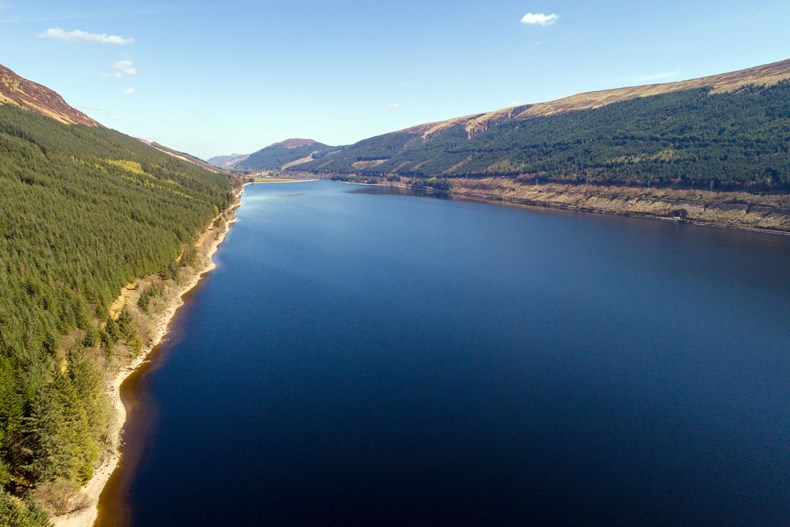The future of energy storage: how pumped hydro storage can help us achieve our net zero targets
08 Feb 2024
Reaching our net zero targets will require an unprecedented expansion of clean energy solutions this decade. This includes pumped hydro storage, a technology that has been around for over 100 years but is undergoing a global renaissance due to the need to integrate and balance increasing volumes of variable renewables. It can store vast amounts of energy and deliver it on demand. Pumped hydro storage will have a key role in establishing a clean, green and secure energy system.
In this blog, we will explore the future of energy storage. And the potential impact of Britain’s largest pumped hydro scheme investment.
The importance of energy storage in achieving net zero targets
Long duration electricity storage is critical in our journey to achieve net zero. Energy storage is needed to compliment variable renewable energy sources such as wind and solar. When the wind doesn’t blow and the sun doesn’t shine, we will increasingly need to rely on energy storage technologies. Storage technologies like pumped hydro storage will allow us to meet demand.
Energy storage helps to maximise the use of clean energy resources by:
- storing excess energy during times of low demand
- releasing renewable energy when demand increases
- releasing renewable energy into the system when renewable output decreases
This process enables a smoother integration of renewable energy to the grid. It also increases the efficiency of the energy system. And by balancing supply and demand, we can reduce the need for fossil fuel-based backup power. Pumped hydro storage is a reliable and cost-effective method to store energy.
And we are not the only ones who believe pumped hydro storage is key to our future success. In January 2024, the UK Government published a consultation by the Department for Energy Security and Net Zero (DESNZ) on how to unlock investment in long-duration electricity storage.
Long-duration electricity storage is an essential to achieve our net zero targets and pumped hydro storage is the world’s largest, most proven and cost-efficient technology. By harnessing its potential, we can ensure a reliable and sustainable energy future.
How pumped hydro storage works
Pumped hydro storage uses excess electricity during off-peak hours. During this time, it pumps water from a lower reservoir to an upper reservoir. Water is released during peak demand periods. Water flows from the upper reservoir, downhill. As it moves, it passes through turbines to generate electricity.
One of the key advantages of pumped hydro storage is its large-scale storage capacity. This technology has the potential to store massive amounts of energy. This makes it easier to meet high supply demands than other technologies.

The potential impact of pumped hydro storage on the energy sector
For the energy sector, storing excess renewable energy is a significant advantage. It means the sector can rely less on fossil fuel-based power plants. This will help mitigate greenhouse gas emissions. This positive environmental benefit is important to energy companies like SSE.
Pumped hydro storage also offers grid stability and flexibility. With its large-scale storage capacity, it can balance intermittent renewable energy sources. It can ensure a constant and reliable power supply. This stability is crucial in supporting the growth of renewable energy. And the transition towards a cleaner and more sustainable energy sector.
In fact, investing in pumped hydro storage could save up to £690 million a year on the pathway to net zero. This figure is from a study by independent researchers. It found that 4.5GW of new long duration pumped hydro storage with 90GWh of storage could save up to £690 million per year in energy system costs by 2050. This would help the UK transition to a net zero carbon emission system.
SSE Renewables commissioned the report by Imperial Consultants. It focused on the benefits of new long-duration pumped hydro storage in Scotland. Pumped hydro storage is the most established long-duration energy storage technology.
Investing in this technology requires significant capital with a long build time. Time has been one of the biggest challenges facing the energy sector. We need a policy to enable investment in long-duration electricity storage projects. That is why we welcome DESNZ's consultation. We hope it will deliver the British Energy Security Strategy's commitment to have a policy in place in 2024.
Doing so would be a positive step forward for one of our key projects: Coire Glas. Coire Glas is at Loch Lochy, between Fort William and Inverness in Scotland's Great Glen.
SSE Renewables wants to continue development of its landmark pumped hydro storage project with a £100 million investment boost. Coire Glas has the potential to be Britain’s biggest pumped hydro storage scheme in 40 years. This Scottish Highlands project could power 3 million homes for up to 24 hours. And more than double Great Britain's total current electricity storage. Find out more about how Coire Glas could double storage capacity in our video.
The promising future of pumped hydro storage
This technology holds great promise for the future of energy storage. Looking ahead, it is crucial that the nation has the right policies in place.
"Much work is now needed to ensure an effective mechanism is finalised and put in place as early as possible this year to enable projects such as Coire Glas to take final investment decisions and move into construction."
Finlay McCutcheon, Director of Onshore Europe, SSE Renewables
There is a gap between intermittent renewable energy and electricity demand. By harnessing the power of pumped hydro storage, we can bridge this gap. Pumped hydro storage will help us achieve our net zero targets. And create a more sustainable and resilient energy grid.
The future of energy storage is exciting. Pumped hydro storage is set to play a significant role in shaping that future. It has the potential to revolutionise the way we store and use renewable energy. With it, we can create a cleaner and more sustainable world for future generations.


